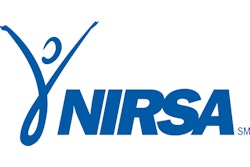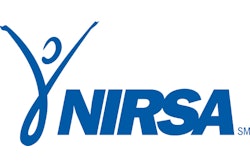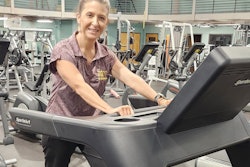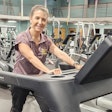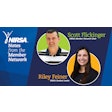![[Houston Community College Unified Sports]](https://img.athleticbusiness.com/files/base/abmedia/all/image/2019/05/ab.NIRSAHCC.png?auto=format%2Ccompress&q=70&w=400)
In Spring 2017, staff at Houston Community College (HCC) — a sizeable southern urban community college system — discussed the possibility of developing a unified sports program. HCC is one of the largest community colleges in the United States, with an enrollment of over 58,000. A multi-college system, HCC’s six main campuses span over 20 acres. HCC has a diverse student body: minority enrollment is over 60%, students from over 30 countries are enrolled, there is a sizeable veteran population, and there is a specialized program for adults with intellectual disabilities.
Setting the vision
HCC staff wanted a recreational program where all students—regardless of gender, race, ethnicity, socioeconomic level, or ability—could participate equitably. The impetus for this type of program emerged from an HCC recreational sports department meeting that focused on increasing collaboration with other departments on campus. The HCC recreational sports department wanted to grow their department and ensure that inclusion was being promoted on the campus. During the meeting, the HCC staff members recognized that collegiate unified sports would be ideal for the college due to the diverse student body and the focus on inclusion and student participation.
Unified sports opportunities promote acceptance and the value of all college students. HCC staff are consistently looking for programs which help create a community atmosphere on campus which is comprised of students who are all commuters. When students feel they are part of the community they become less isolated and are more open to meeting and talking with others. When planning the unified sports program, staff paid specific attention to the inclusion of intellectually-disabled students since this part of the student body was historically underrepresented among existing campus groups. The unified sports programs wanted to achieve a holistic representation of the student body.
Along with Renee Klovenski, Regional Executive Director of the East Region of Special Olympics, and Sue Moraska, program founder and Director of Vocational Advancement in Skills Training (VAST) Academy (an HCC program designed for adults with intellectual disabilities), we—a recreational sports specialist from the Central campus of HCC and a full-time professor of VAST at the Central campus of HCC, respectively—convened to discuss building a unified sports program.
Our group discussed whether to make the unified sports program available at all Houston Community College campuses or at another centralized, off-campus location. Also, we deliberated over whether to have the program be an official Special Olympics-sponsored program or an institutionally-sponsored program; using Special Olympics as a sponsor would require the program to abide by specific rules and use Special Olympics signage.
After several meetings, the group reached consensus and decided that it would beneficial to start a unified sports program to be piloted at the Central campus location. Central was the ideal location as it is the only HCC location with a full-sized gym and diverse sports equipment. The HCC Central campus location also has an active recreational program, so there was evidence that students there liked participating in recreational athletic events. Additionally, HCC Central was selected because we worked at this location, facilitating easier coordination of activities. The program would be institutionally-sponsored—and not held under the umbrella of Special Olympics—to allow for optimal flexibility in deciding on activities and their format. Most events would take place on-campus to encourage maximum student participation. Due to student schedules and transportation accessibility, on-campus events have the best turn-out.
Launching a pilot program
In Summer 2018, we planned three unified sports events—soccer, baseball, and volleyball—for the Fall 2018 semester. We chose these activities because they’re team sports, require minimal equipment, and are familiar to most people.
A unified sports informational meeting was held for the general student body in September 2018. The purpose of this meeting was to introduce and explain the concept of unified sports to potential participants. We defined unified sports as a recreational sport program that was inclusive of all students—no exceptions—and we explained how, through sports participation, all students would be welcomed and encouraged to meet others. A total of 50 students attended the meeting. While most of the students attending the meeting took flyers and stated interest in the upcoming events, a much smaller number — only 17 — signed-up for the scheduled events.
All the students at HCC are commuters, making recruitment for events difficult. Additionally, many students are employed and/or have children, which limits their free time. Historically at HCC, approximately one third of students who register actually go on to attend the events. Therefore, the 17 students who registered through the informational meeting would be insufficient for us to hold successful events. More marketing efforts would be needed to secure an adequate turnout from the general student body.
The HCC Central campus is located in an urban area, less than two miles from downtown Houston. It is a popular campus located near the major rail line and several bus locations. To try and increase the number of general study body participants, we decided to contact the college’s sports teams. Since student athletes enjoy playing sports, we hypothesized that they might be interested in participating in unified sports opportunities. In her role with HCC Recreational Sports, Shaneisha also used promotional emails and fliers to promote the events.
Finding participants from the VAST Academy proved less challenging; as a professor in the program, Brigid was teaching two health and fitness classes during the fall semester and many students in these classes volunteered to participate. Additional students from the program also volunteered to participate. In total, 20 students with intellectual disabilities registered for the unified sports events.
One of the intellectually-disabled students also had a physical disability; she is in a manual wheelchair. While she wanted to participate, she didn’t want to play. She volunteered to serve as a linesperson for the events. Again, the central theme of unified sports is uniting all students, so the roles of score keeper, timer, and line judge were also open to student participation. Participation and meeting new people were key elements of this pilot program.
The first three unified sports events at Houston Community College
The first unified events for HCC Central were two soccer games held in September. Both games were played in the gymnasium and were 40 minutes long, divided into 20-minute halves. The two games were played on consecutive days to better accommodate varying student schedules. Twelve general students and 16 students with intellectual disabilities played. One VAST student also participated by acting as a line judge. The 29 students included students of differing genders, races, intellectual disabilities, and physical disabilities. Although the number of students was relatively small compared to the total student body population, the organizers were satisfied that participating students appeared to enjoy the events. Their underlying goal of achieving diversity among the participating athletes was accomplished.
The next set of unified sports events took place in October. These were baseball games played at a nearby, off-campus park. An off-campus location was selected because it had a baseball backstop and land for a field. Once again, there were two games played on consecutive days. The games were six innings and lasted approximately 45 minutes. Seven general body students and 14 students with intellectual disabilities played in the games. Furthermore, two VAST students and a general body student served as score keepers. The 24 students included both female and male students, as well as participants from diverse racial and ethnic groups. The VAST program had two students in wheelchairs who played in the game. The lower turnout from the September soccer events was anticipated due to the events taking place off-campus.
Volleyball games were the final unified sports opportunities from the pilot program to take place. Two games occurred on-campus on back-to-back days in November. A total of 20 intellectually-disabled students and eight general-body students played in the games. One VAST student served as line judge. The low turnout of general-body students may have resulted from November being a busy time of the year. Some students were absent due to the Thanksgiving holiday, and others may have been preparing for end-of-the-term exams. Whatever the reason, we were disappointed in the turnout and began brainstorming new recruitment techniques to employ in the upcoming semester. Ideas for the future include using the college’s PR personnel to advertise events and putting yard signs around campus on the day of the event.
Gathering feedback for the future
Once all unified sports events were wrapped up for the semester, we conducted surveys to obtain the participating students’ opinions of the unified sports program. The general student body participants were invited to an end-of-the-semester celebration. During the celebration, students were asked to complete a 12-question, mixed-method survey. This survey was available online for students who were unable to attend the celebration. A total of 16 students completed the survey and results indicate that no central method of advertising drew students to the events.
Students learned about the events from friends, employees, flyers, bulletin boards, and randomly in the fitness area. The participants said the best method of contact was email (71%) and then text messaging (28.6%). Besides soccer, baseball, and volleyball, the overwhelming majority of students surveyed (88%) said they would like to participate in basketball. No other sports mentioned among the survey responses received above a 14% response rate.
The surveys also indicated that a clear majority—over 85% of respondents—liked the location, time, and date of the events. In addition, the majority—86% of respondents—specified that they had a better understanding of unified sports after participating. All the participants responded that the unified sports opportunity was a positive experience, and 86% said they would participant in unified sports again.
Finally, the survey included an open-ended question asking how the experience could be improved. Suggestions included having more advertising and including additional sports. Both of these suggestions seemed reasonable. This was a pilot program, so we wanted to start off slowly as we’re chartering new territory. Another suggestion was for the organizers to try and reach out to professors so they could help market the program. This idea was rational as professors have direct contact with large numbers of students. The most approachable professors would be those in the health and education departments as this pilot program is an inclusive way to help students get some exercise.
The intellectually-disabled students were given a different survey that was designed to be accessible. A total of 18 students completed the survey. The survey consisted of four open-ended questions. The first question asked them to define unified sports; 35% of respondents said it was all people playing sports together. The second question asked, “Have you enjoyed playing unified sports?” A majority, 82%, said that they did enjoy playing unified sports. The third question asked if they had met new people; 94% said they had. The fourth question asked what changes need to be made to the unified sports program; replies included “Play football” and “Have sanctioned officials.”
Learning from challenges
We started the pilot program expecting challenges along the way. Scheduling turned out to be a significant challenge since the college’s gym is used for academic kinesiology classes in addition to recreational sports. This meant the gym had only limited availability throughout the semester. Also, the VAST Academy students have a fairly-structured day, so finding corresponding times when those students could participate was difficult. Another challenge was advertising the events. A total of 52 students participated in unified sports. This number is acceptable for a pilot study, but the researchers hope to increase it next semester. The Central HCC campus has over 8,000 students enrolled each semester, so there are opportunities to grow participation.
After dialogue, one new method of marketing will be using yard signs on the days of the event. Yards signs have been utilized on campus to gain donors with relative success, and so it offers a promising practice for unified sports. Yard signs are relatively inexpensive, so there’s little downside to using them. Another method for targeting students is taking advantage of the college’s new texting system. Student life has begun to use the texting system to alert students of campus events. Unified sports could also alert students of events via text. The other method discussed is using a social media presence on the college’s website to promote events. The site would allow unified sports to have a home base to promote events and recruit students.
Additionally, the unified sports program will be adding new sports and opportunities since that’s what students want. New events to be added in the future will include a relay obstacle course and basketball. Adaptive basketball equipment has been purchased so that physically-impaired students will also be able to participate. Hopefully, the more diverse events we offer will attract a more diverse reflection of our student body. Houston Community College looks forward to expanding its unified sports program to serve an even wider array of the student body in the future.
Related: Special Olympics and NIRSA align to promote inclusive sports
Shaneisha Weir is currently a Recreational Sports Specialist at the Central campus of Houston Community College; she can be reached at [email protected]. Brigid A. Wilson, Ph.D, is currently a full-time professor of Vocational Advancement in Skills Training at the Central campus of Houston Community College; she can be reached at [email protected].
This article was republished with permission from our partners NIRSA — Leaders in Collegiate Recreation. Read the original here.


















